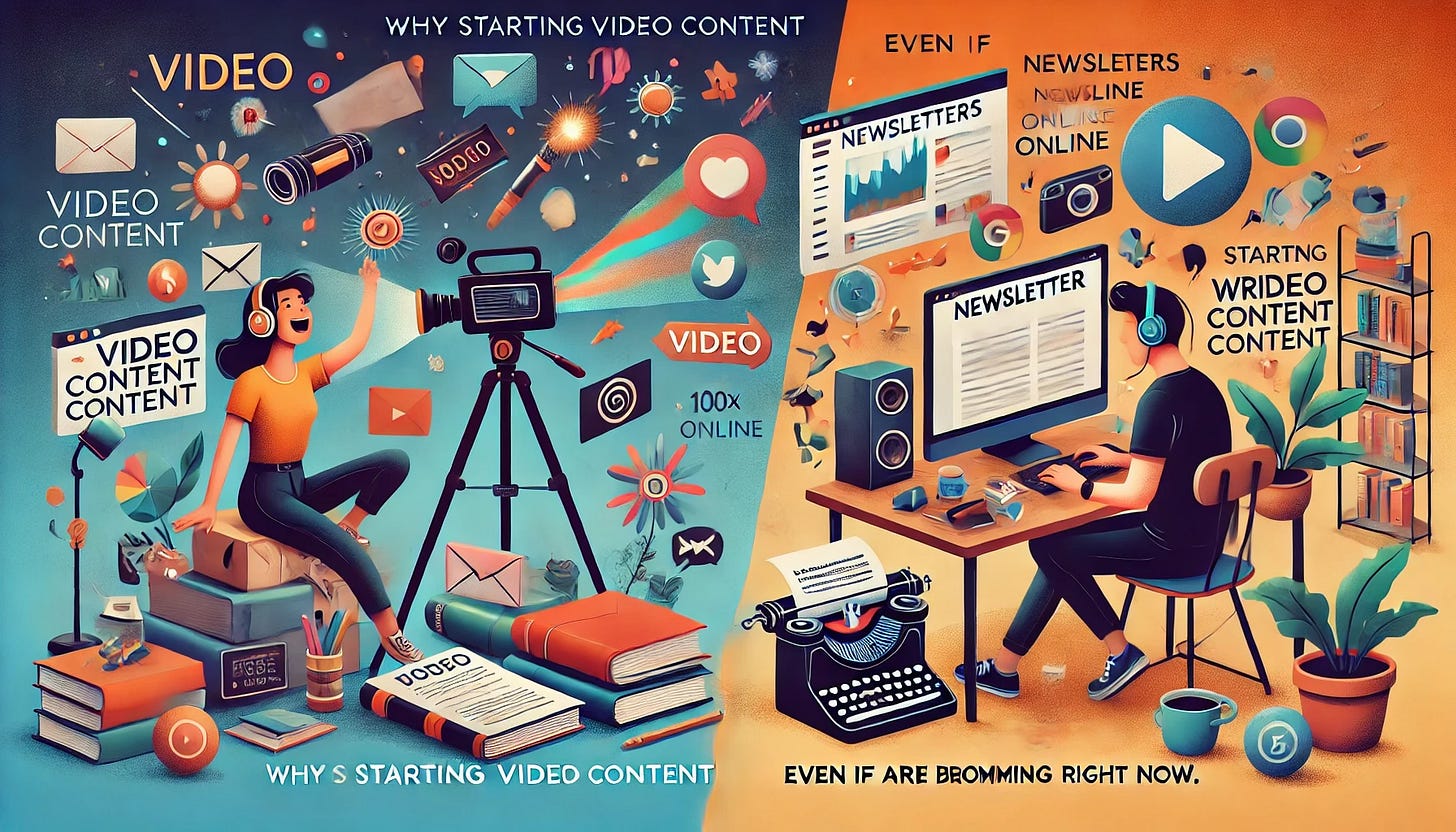Why Starting Video Content is Still 100x Better Than Writing Online (Even If Newsletters Are Booming Right Now)
You may not want to hear it (I don't)
I am a wordsmith. I love writing. Blog posts were my intro to online business, and words have been the backbone of my success up until now.
That being said words can't compete with video. Even though newsletters are booming more than ever right now.
You hear about people growing their email lists, selling courses, or making bank from their written content.
Keep reading with a 7-day free trial
Subscribe to Letters by Burk to keep reading this post and get 7 days of free access to the full post archives.



